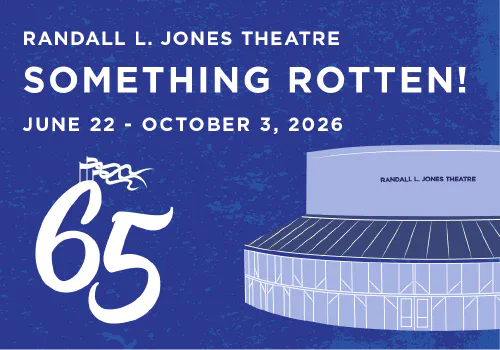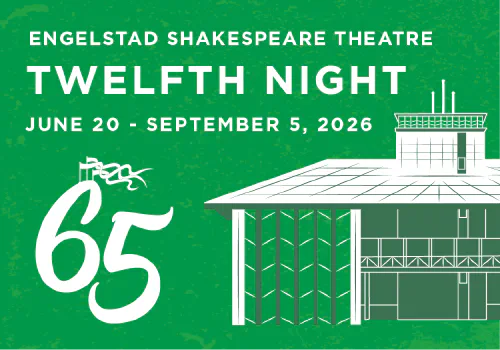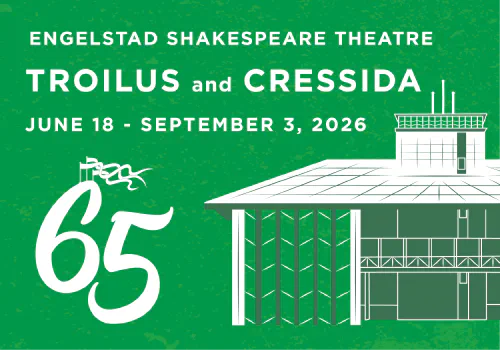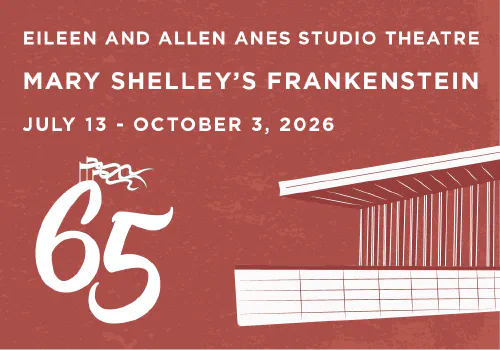By Diana Major Spencer
The very notion of “history according to Shakespeare” would be laughable if not for the Bard’s notorious success in bequeathing his recombinations of historical fact to subsequent popular history. For example, The Famous History of the Life of King Henry the Eighth is no more accurate thanRichard III, the events of which span fourteen historical years. Henry VIII covers twenty-four years, but the action seems just a few months longer than Anne Bullen’s pregnancy. Still, even with these similarities, this, Shakespeare’s last play differs in significant ways from his other history plays.
First, Shakespeare’s histories typically present indelible portraits of British monarchs which both reflect and propagate the popular history of Tudor times–and provide the persona and myth that survive in the modern collective imagination. In contrast, the image of Henry VIII we recognize as “truth” is nowhere found in Shakespeare’s play.
The popular portrait of Henry reveals a Bluebeard who had six wives and beheaded all of them. (In fact, just two wives were executed–enough, certainly; the others were divorced or annulled, died in childbirth, or survived him.) Visually, the universal image is the proud, determined, barrel-chested, fur-lined, spread-legged, square-jawed monarch, arms akimbo, in the famous portrait by Holbein, or the magnificent warrior-athlete who filled the colossal armor now at the Tower of London. In the 1970s, the British Broadcasting Company depicted a bloated, pasty, goutish, syphilitic Henry in the person of Keith Moore in the final episode of The Six Wives of Henry VIII.
None of these personae appears in Shakespeare’s last play: no one big enough to fill Henry’s six-foot-plus armor, no heartless husband, no boisterous Falstaffian king, alternately jolly and cruel. Shakespeare’s Henry seems mild-mannered, genuinely sorrowful over Katherine’s “necessary” departure, and innocently deceived by Thomas Wolsey, cardinal of York and lord chancellor of England. Henry grieves over Buckingham, the “mirror of all courtesy” (2.1.53); pities Katherine, “so good a lady that no tongue could ever / pronounce dishonor of her” (2.3.3 4); and sincerely loves Anne: “By Heaven, she is a dainty one” (1.4.94).
Katherine, the daughter of Ferdinand and Isabella of Spain, was widow to Henry’s brother, Arthur. Henry is now concerned that, since a papal dispensation was necessary to legitimize his marriage to his brother’s widow, the lack of male heirs after twenty-two years might indicate God’s disapproval of the Pope’s earlier blessing. One historical version suggests that Henry never questioned his marriage to Katherine until after he had met Anne Bullen. Shakespeare introduces them before the divorce—in fact, has them married—but the real villain of the play is Wolsey, who insinuates the “scruple” or “qualm” because he wants Henry free to engage in a match with a French princess. Poor Henry: He’s much too nice to keep up with Wolsey’s machinations. He asserts stronger control of his power after his marriage to Anne, in both his condemnation of Wolsey and his vindication of Cranmer, but concludes the play cooing over a–Heaven forbid!–baby daughter. This is not our macho monarch.
In addition to characterization, Henry VIII differs from Shakespeare’s other histories in structural cohesion as well. Rather than a unified, motivated sequence of events populated by well-developed characters, Henry VIII indulges in episodic pageantry—i.e., masque—beginning with a description of the Field of the Cloth of Gold and ending with the christening of Elizabeth. The expensive but meaningless 1520 meeting between Henry and Francis I of France begins the play in splendor and futility. The play ends in splendor and hope with Cranmer’s sanctifying prophecy of the wondrous future in store for England under Elizabeth.
As a theatrical entertainment, the masque originated with young men attending parties wearing—what else?–masks. Love’s Labour’s Lost and Romeo and Juliet provide examples, as does Henry VIII. For instance, Henry wears a mask to Wolsey’s party at the end of act 1, where he meets Anne Bullen. Over time, the English masque became a progressively elaborate, episodic and conventionalized theatrical spectacle, less involved with action and character, and more with splendor, processional, and tableau.
Between Henry VIII’s bracketing pageants, six additional courtly spectacles surround three episodes of de casibus–the fall of princes–each of which is, in turn, accompanied by another pageant of sorts, from courtroom trial to supplication, and each of which ends with a Shakespearean farewell speech, full of passion, accountability and forgiveness. The de casibus episodes hang loosely together, thanks to Chamberlain, Sands, and three nameless gentlemen who provide the connecting narrative as they share the gossip of the day: “Well there goes poor Buckingham, off to the Tower. By the way, Wolsey’s throwing a party, and have you heard about Katherine?” Connected plot movement dissolves in Henry’s court, Wolsey’s grand hall, Anne’s coronation, Katherine’s bedchamber, Cranmer’s trial, and the great hall of the palace, the site of Elizabeth’s christening. The entire play is a procession of processions, a spectacle of spectacles, a masque of masques.
Henry VIII further differs from Shakespeare’s other history plays thematically. The other histories feature usurpations, English victories in battles, and overt philosophical discussions of kingship. Henry VIII has ceremonies. Its major concerns are religious and patriotic, from questions of the morality of Henry’s marriage to Katherine of Aragon, a Spaniard, to the misuse of power by Cardinal Wolsey, a Roman Catholic. Wolsey’s successor, Cranmer, a Protestant, favored Henry’s divorce and became the first Anglican Archbishop of Canterbury. Katherine, whose nephew Charles was king of Spain and the holy Roman emperor, is replaced by an Englishwoman, Anne Bullen, whose daughter is one hundred percent English and Protestant, with no continental ties or papist connections. The play begins with concern for Rome, Catholicism, and France, but ends with England, England, England. Between, events associated with England’s greatest assertion of its independent nationhood parade in great spectacle and high drama.
Such differences from the other Henry plays and Richard plays lead to controversy over who actually wrote Henry VIII, for what occasion it was written, and what motivated the themes that celebrated Elizabeth’s once and future glory and England’s Protestant triumph when Elizabeth had died ten years earlier. One interpretation suggests that celebrating Elizabeth was appropriate because her namesake Elizabeth, daughter of James I, was marrying a prominent continental Protestant, which explains the play’s depiction of Cranmer’s rise. Somehow, a wedding play named for the Henry who had six wives under less than happy conditions, coupled with three cases of de casibus, and, by the play’s own timetable, an illicit marriage to Anne Bullen before the annulment from Katherine does not bode well for a happy marriage.
Another conclusion has the Bard again adapting his work to the changing fashions of the Jacobean theatre in the early seventeenth century. Masque and allegory accompanied by rich music, visual splendor, and special effects (like cannons) were increasingly popular toward the end of Shakespeare’s career. He could certainly produce those as easily as his tragedies in their proper time, especially as he was a theatre-man, not an Aristotelian formalist or philosopher.










